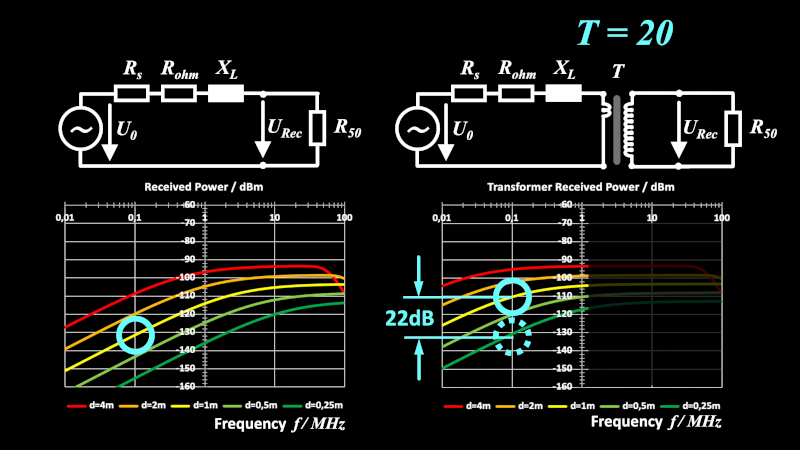People have long been interested in very low frequency (VLF) radio signals. But it used to be you pretty much had to build your own receiver which, luckily, wasn’t as hard as building your own VHF or UHF gear. But there is a problem. These low frequencies have a very long wavelength and, thus, need very large antennas to get any reception. [Electronics Unmessed] says he has an answer.
These days, if you want to explore any part of the radio spectrum, you can probably do it easily with a software-defined radio (SDR). But the antenna is the key part that you are probably lacking. A small antenna will not work well at all. While the video covers a fairly common idea: using a loop antenna, his approach to loops is a bit different using a matching transformer, and he backs his thoughts up with modeling and practical results.
Of course, transformers also introduce loss, but — as always — everything is a trade-off. Running hundreds of feet of wire in your yard or even in a loop is not always a possibility. This antenna looks like it provides good performance and it would be simple to duplicate.
Early radio was VLF. Turns out, VLF may provide an unexpected public service in space.
















I’ll just leave this here for people interested in the VLF band (3 to 30 kHz) and below http://www.vlf.it/
VLF is an amazing field that still needs a lot of study. I have done some listening myself, and found some of the sounds and signals created to be absolutely amazing. The site referenced above is a great resource if you are interested. Also, a VLF receiver is pretty easy to build, and can be a really cool tool to bring with you next time you are in the mountains or other wilderness area, to avoid the pervasive AC background hum (60Hz in the US) that is literally everywhere. From my own experience, youll want a 50 or 60Hz notch filter (depending on your mains frequency) on your rig to get the best listening experience. On a side note, one wonders if the expansion of the Van-Allen belts around the 1960’s as noted in the linked article/study is related to the reduction of ozone production in the upper atmosphere?
Z1/Z2 = N^2 not N
Transformer coupled radio input stages seem to be a lost art nowadays. Back in the tube era, practically all receivers from LF to VHF/UHF used some kind of step-up transformer to get voltage gain without extra noise for free. Also making the loop antenna resonant at the desired frequency helps a lot.
Transformer input stage is one of the most noisy gain choices in modern times. The thermal noise from all that winding is way higher than a modern low noise opamp
Not necessarily, a very low-noise opamp (for example LT1115) still has an input noise density of 0.9 nV/sqrt(hz). This is about equivalent to the thermal noise of a 50 Ohm resistor at room temperature – and as long as the transformer resistance (input winding resistance plus transformed output winding resistance, including the skin effect) is a lot less than that, the transformer can still improve noise performance.